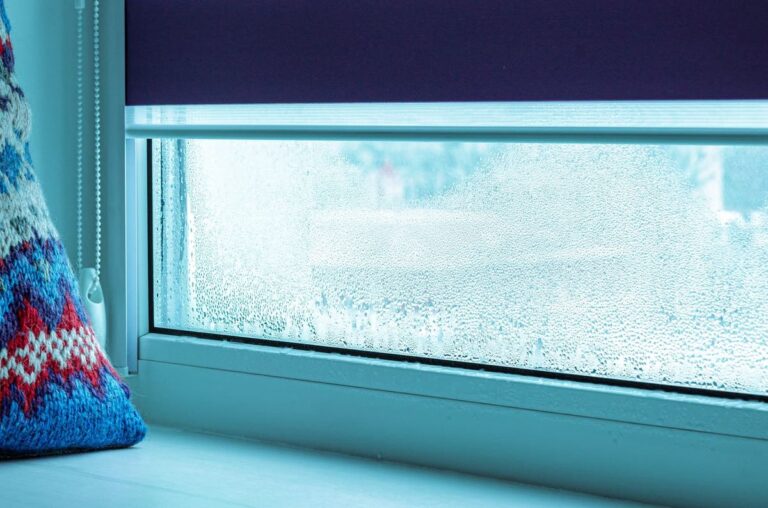How to Prevent Window Condensation and Fog in Winter Months

How to Prevent Window Condensation and Fog in Winter Months
When you heat up your home in the winter, it makes everything cozy and comfortable. Unfortunately, it can also fog up the windows in your home. Condensation can build up on the surface, and fog can even develop between the panes of glass. If you want to see outside without the fog this winter, there are a few maintenance steps you can take to remove condensation on windows in winter—and that fog may be a clear indication it’s time for newer and more energy-efficient windows. Learn more about what’s causing the fog and what we can do.
What Causes Window Condensation?
Why do windows fog up? Condensation develops on any cold surface on one side and warmer on the other. Picture soda cans, cool glasses, and even your shower walls. The cold temperature seeps through the surface and causes any moisture in the air to condense. If you see thin drips or lines of water on your home’s windows and you know you don’t have a leak, it’s likely condensation at work.
Rather than leaving visible drops, this condensation effect can leave a thin layer of frosty-looking water across the surfaces of your windows. You’ll see house windows fogging wherever the insulation value is lowest and the seal on your double-paned windows is broken. When that happens, fog can even develop inside the windows.
Problems Window Condensation Can Cause
Window condensation in winter can be visually irritating, especially if you like seeing out your windows and don’t want to see a frosty, mottled fog. But it can also signal bigger problems with your windows and home maintenance. Be on the lookout for:
Mold: Mold and mildew can form wherever there’s trapped moisture. Once fog penetrates the interior of your windows or condensation starts to build up along the window frames, you’re likely to start seeing dark blooms of mold.
Water damage: While glass can be continually exposed to water, wood, insulation, window seals, and other surfaces can’t. You might see corrosion around the window guides, blistering or peeling around the window seals, and damage to the nearby paint.
Climbing energy bills: The difference can be subtle at first. But if you notice more and more condensation on windows in winter, that means the windows aren’t adequately insulating your home—cold is getting in, and heat is escaping out.
How Do I Get Rid of Condensation During the Winter Months?
You can use a few daily strategies to keep window condensation at bay. If you’re looking for a quick fix for condensation on windows in winter, try these options:
- Run a dehumidifier: If your home has excess humidity, a dehumidifier offers a wide range of general household benefits. It can also reduce the amount of moisture pressing against your window (and fighting to get in between the panes). But this can be tricky in the winter when the air already feels dry, or you have gas heating.
- Add ventilation: Ceiling fans and increased ventilation can keep air circulating and stop humidity from building up near your windows. If the weather isn’t too frosty, you can open the windows for around 20 minutes daily to let the moisture out.
- Increase the heating: When your windows let cold in, they reduce the air temperature against the windows inside. Fight against the lower temps by running your heater.
These solutions to fogged-up windows aren’t permanent and can quickly become unpleasant daily chores. When you see too much condensation, considering new windows is a great opportunity. New, smarter windows include layered components to prevent fog and moisture buildup, and they often have superior insulation value, so you also save more on your winter (and your summer!) energy bills.
Are You Looking Into Getting New Windows or Doors?
Stay cozy this winter without losing the view out of your windows, and get rid of the steamy windows in your home. At Pella Windows and Doors, we have a wide selection of energy-efficient, ENERGY STAR-rated windows. Reach out today for a free in-house consultation.
Image Credit: Natalia Yankovets / Shutterstock
Getting new doors is exciting, but there’s a lot to know! Get in touch with Pella Windows and Doors of Dallas/Fort Worth today and learn more about how a new front door can improve your home and the quality of your life.

